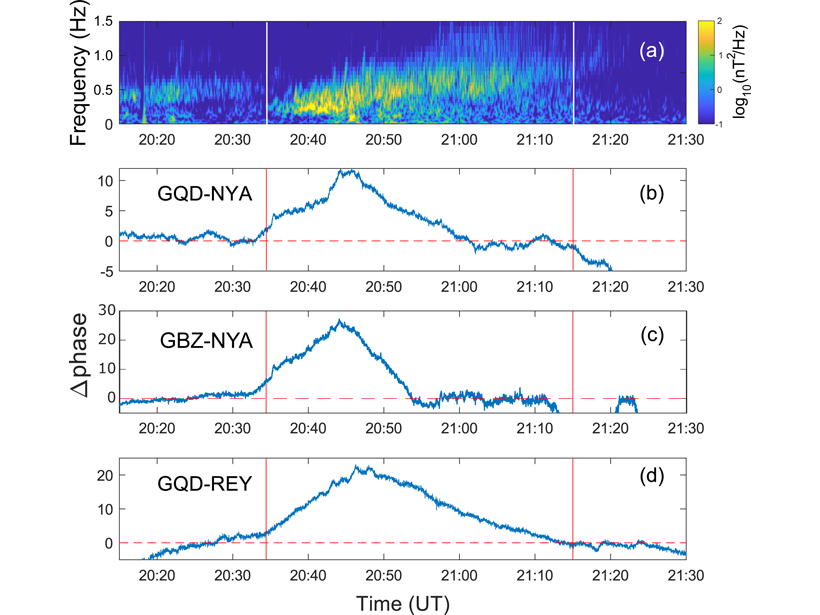Source: Geophysical Research Letters
A long-standing question about electromagnetic ion cyclotron waves (EMIC) in the Earth’s magnetosphere is the energies and rates at which they interact with the energetic electrons. A related question is how this interaction drives the precipitation of the energetic electrons into the upper atmosphere. Both questions are due to our lack of precise knowledge on the spatial scale size of EMIC activity regions.
Hendry et al. [2020] effectively turn the combination of two orbiting satellites (the NASA Van Allen Probe B and the Japanese Arase) and a ground sub-ionospheric Very-Low-Frequency (VLF) network into a powerful “magnetosphere-ionosphere observatory”.
By combining the observations from the different space- and ground-based platforms, the authors successfully determine the longitudinal extent of the EMIC source region. In the process, the combination demonstrates the growing power of such “heliospheric observatories” for tackling long-standing questions of the Sun-Earth system.
Citation: Hendry, A. T., Santolik, O., Miyoshi, Y., Matsuoka, A., Rodger, C. J., Clilverd, M. A., et al. [2020]. A multi‐instrument approach to determining the source‐region extent of EEP‐driving EMIC waves. Geophysical Research Letters, 47, e2019GL086599. https://doi.org/10.1029/2019GL086599
—Andrew Yau, Editor, Geophysical Research Letters
Text © 2020. The authors. CC BY-NC-ND 3.0
Except where otherwise noted, images are subject to copyright. Any reuse without express permission from the copyright owner is prohibited.

